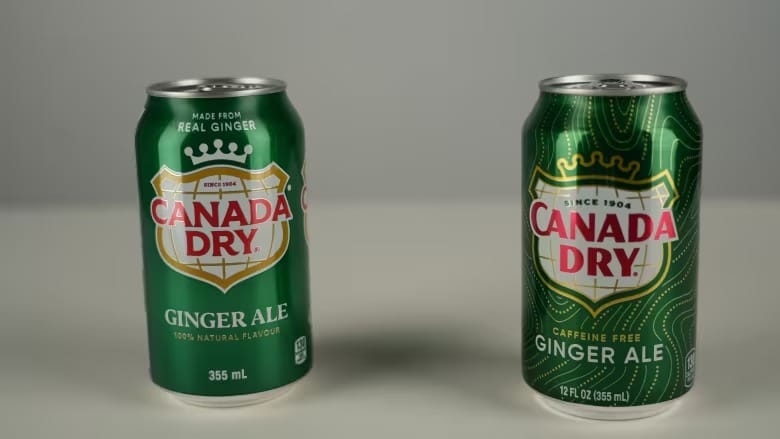Why Canada Dry's 'made from real ginger' claim isn't on U.S. cans
Consumers not always left with a clear understanding of what they're getting

Emily Scott, originally from the Caribbean where she often enjoyed ginger beer, was intrigued to try Canada Dry Ginger Ale after her son brought some home. But she was disappointed by the taste and, upon checking the ingredient list, was surprised to find no ginger listed. Despite the Canadian can's claim that the product is "made from real ginger," the absence of ginger as a listed ingredient led her to feel misled.
In the United States, a 2019 class-action settlement led to the removal of this claim from Canada Dry Ginger Ale. However, in Canada, a similar lawsuit did not result in the label change, and "made from real ginger" remains on the packaging. While U.S. cans specify less than two percent ginger extract, Canadian labels list only "natural flavor" without specifying the ginger content. Canadian court documents allege the ginger ale has just one drop of ginger extract per 70 cans, derived from ginger root and referred to as ginger oleoresin.
Professor Amy Proulx from Niagara College, an expert in food technology, clarified that ginger oleoresin, derived from ginger root, is highly concentrated and typically used in trace amounts, often parts per million. She explained that this concentration approach is common for flavoring agents in the food industry.
The Canadian Food Inspection Agency (CFIA) reviewed the claim on Canada Dry's label following a consumer complaint and concluded that the product complies with Canadian labeling rules since it contains real ginger extract. However, Proulx noted that CFIA's standards may lead to consumer confusion about how ingredients are prepared and listed.
This issue extends to other products as well. For example, "IronKids Essentials Multi-Vitamin Gummies" lacks any iron despite its name. Health Canada’s guidelines allow brands like IronKids to use such names, though some consumers, like Dr. Paul Oh, a heart health specialist, find it misleading.
Similar concerns arise with Kiju Organic Pomegranate Cherry juice, which lists apple juice as the main ingredient but features images of pomegranate and cherry on the packaging. The company has announced plans to update the label to reflect apple as a primary ingredient, following criticism.
The CFIA encourages consumers to report misleading labels and is open to revising its regulations to increase transparency. Dr. Oh has advocated for more straightforward packaging, suggesting companies devote part of the front label to accurately represent the product’s contents.





